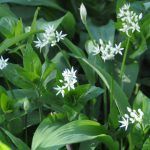Apologies for the silence of late but May’s the first of the really mad months – so much to sow and so many emerging weeds to keep in check. Why on earth I have an allotment on top of the day job is a mystery as well as a busman’s holiday. Still, I can’t help but feel positive at this time of year. The potato leaves are poking through, the first lettuces are ready to eat and I’ve planted up the polytunnel with sixty-odd varieties of tomato (it took a whole day). It’s also Spargelzeit! Asparagus is so loved in Germany that the season has its own word, which just means ‘asparagus time’ but it looks good and is nice to say.
I love the promise of spring. Everything is fresh and almost overwhelmingly green. The thought that this year could be the best summer ever always sneaks in, unlikely though that is, and once again I will find myself doing overly optimistic things such as planting peppers outdoors or sowing hyancinth beans just in case.
This week I am particularly excited about the agretti. The name usually draws blank stares because the plant is not native to the UK and consequently not part of our culinary tradition. Hopefully that will start to change. The Italians know and like it and besides agretti, call it barba di frate (monk’s beard) and roscano. The Latin is Salsola soda, which reflects its historical importance as a source, once burnt to ashes, of sodium carbonate, which is used in the manufacture of both glass and soap. Its profoundly unexciting English name is Saltwort.
Agretti can be found growing on sandy seashores around the Mediterranean basin. It is so salt-tolerant that you could irrigate it with seawater if you really wanted to. It’d be a good plant for coastal gardens, though it seems happy enough miles inland too, on fairly light soils at least. It is related to spinach and beet, though it’s not immediately obvious, since the leaves are needle-shaped and succulent in texture. The young leaves bring a nice crunch to a salad and have a mild salty, minerally flavour. Cooked, the taste is quite similar to spinach. As far as I am aware, it is most commonly steamed or sautéed and then dressed with lemon and oil, usually as an accompaniment to fish. The unusual shape of the leaves makes it eye catching on the plate. I’ve found it twines itself up appealingly with spaghetti. I’ll be very interested to see what Fifteen do with it this summer.
The only drawback to growing agretti is the remarkably short viability of the seed, which is redundant after only a few months. One of the reasons for my current excitement is the high germination rate this year, especially compared to last year, when not a single seedling appeared. I’ve always sown indoors in modules during March and April for planting out about now but I made my first ever direct sowing outdoors last week, with the aim of extending the season. For seed stockists, try Seeds of Italy or CN Seeds. The latter also stock Okahijiki (Salsola komarovii), which is very similar. The name means ‘land seaweed’ in Japanese, apparently.


















